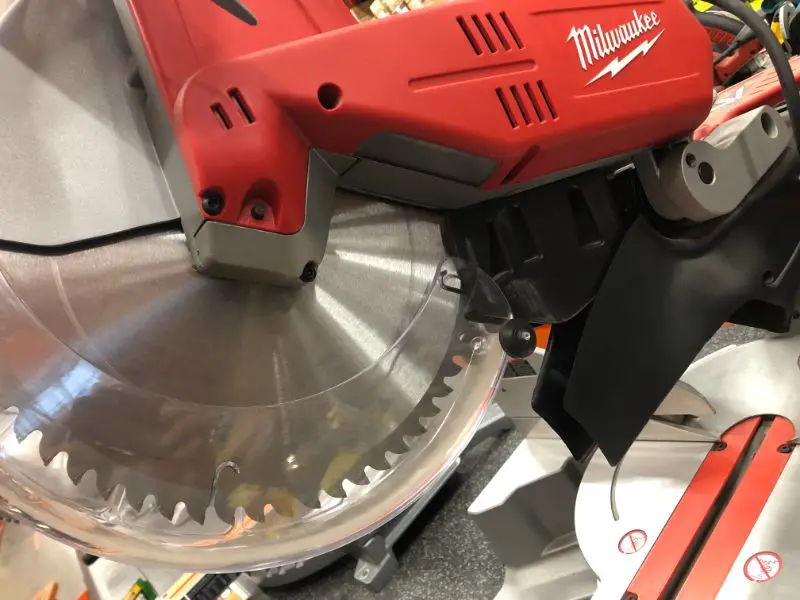How many times have you attempted to cut woodworking costs only to incur even bigger ones? Tried attaching a router bit to a drill, and it backfired big time?
I experiment on stuff, tweaking setups here and there. I have had a few lucky breaks and even more frequent what-was-I-thinking moments.
Been there, done that! Suffice it to say I’ve been through it all. I’ve also seen people wanting to mount a table saw on a miter saw stand. This can be a quick fix to a common problem, but is very risky business.
While you think about this, here’s some gruesome stats to ponder: over 30,000 table saw injuries occur annually.
I’ll bet you don’t want to now, and you most certainly don’t want to be another statistic.
Things to keep in mind before you mount your table saw
Stability
When operating powered tools such as miter saws and table saws, stability is of the utmost importance—and rightly so. You can get away with using a miter saw without a proper bench if you are looking to complete a quick DIY project.
Even so, accuracy and speed are likely to be compromised, not to mention diminished maneuverability.
For heavy-duty use, the importance of a stable work platform cannot be overemphasized.
Miter saws and table saws, by design, are operated differently. For a table saw, wood is fed into a fixed blade. A miter saw blade, on the other hand, is pressed against the wood.
Therefore, miter saws are meant to take pushing force vertically, up/down, while table saws receive pushing force horizontally, side to side.
Therefore, mounting a table saw on a platform designed to accommodate up and down pressure is impractical, to say the least. A table saw demands a higher level of stability.
Instability is not only a nuisance—operating a power saw on a shaky platform is a disaster waiting to happen.
Versatility
A table saw is easily more versatile than a miter saw. In addition to its capacity to handle any size of wood thrown at it, various accessories can be attached to it.
Mounting a table saw on a miter saw stand means you would be trading versatility for a quick fix, which might not be worth it.
Durability
Stability and duration go hand in hand. A woodworker and a table saw on an unstable stand are soon parted. There’s no point compromising stability with cheap, quick fixes if you are looking to use your table saw for as long as it’s designed.
In addition to a sturdy platform, table saws come with a durable light-weight metal sub-frame to support the platform and provide stability.
Advanced miter saw stand models have a sub-frame, but it’s not designed to handle heavy-duty table saw use, especially with other accessories attached. Operating a table saw at full capacity is sure to cut its lifespan significantly.
Maneuverability
What good is a power tool if it doesn’t perform as designed?
Miter saws, with the exception of the sliding-arm miter saw, come with 8, 10, and 12-inc cutting blades. This is not to say that miter saws inherently lack maneuverability.
The miter saw is by far one of the most maneuverable and precise power tools out there.
Even so, there’s only so far it can go in terms of cutting length and depth.
By contrast, table saws come with adjustment gear for adjusting cutting depth despite having a fixed blade.
The accuracy it affords you when dealing with large, cumbersome pieces is unmatched, and what’s more, the flat surface allows the operator to feed long pieces of wood into the blade.
Attach a table saw onto a miter saw stand, and you’ll be sure to lose this vital functionality.
What options do you have to mount your table saw other than a miter saw stand?
Now that we have established that attaching a table saw onto a miter saw stand is a bad idea, you might be wondering if there are cheaper, practical, safer alternatives out there. As a matter of fact, yes.
I would recommend mounting your table saw on a steady workbench or a portable cabinet. Do you pride yourself on being a capable DIYer? Could you build a functional workbench? Even better.
Here’s a great little video of someone doing just that:
Woodwork gurus would advise you to summon your inner creativity and experiment on this. My advice: DO NOT.
Use power tools as designed. You can’t go wrong with this. Experimentation is okay. Heck, I do it all the time, but not when the risk far outweighs the potential benefits.
You would have to sacrifice a great deal. Working accuracy, efficiency, stability, and maneuverability will be hampered. More importantly, you would be setting yourself up for a serious injury.

